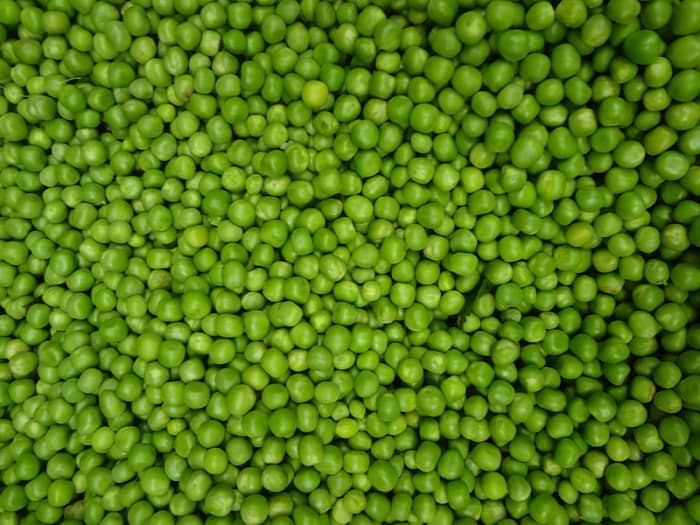What Is The Difference Between Marrowfat Peas And Garden Peas
Caren White is a Master Gardener and instructor at Home Gardeners School. She has been associated with Rutgers Gardens for over a decade.

Wikimedia Commons
A Brief History of Peas
Humans have been growing and consuming peas for about 6,000 years. The Egyptians ate them. The Romans ate them. The Chinese ate them. But they all ate different peas from the vegetable that is familiar to us. Prior to the Middle Ages, people ate dry, or field peas, which were harvested after they had ripened and dried in their pods. We eat peas that have not yet matured and still retain their delicate green color. The switch occurred in 17th century Europe. At first it was just the wealthy who enjoyed the luxury of "garden" peas. As they became more readily available, even the poorest Europeans made the switch from "pease porridge" to succulent green peas.
What are Peas?
Peas (Pisum sativum) are an annual vining cool season plant. They are a member of the legume family which includes beans, soybeans and peanuts. Like other legumes, they fix nitrogen in the soil. Peas are an excellent crop to grow in rotation with heavy nitrogen feeders like cucurbits, such as squash and pumpkins, and solanaceous plants such as tomatoes and peppers.
You can plant your pea seeds about one month before your last frost date when the soil temperature reaches 45⁰F. In the Northeast, the traditional date to plant peas is on March 17, St. Patrick's Day. The vines will stop growing and producing when the air temperature reaches 80⁰F.

Pease can be grown on tepees
Wikimedia Commons
How to Grow Peas
As testified to by their ancient history, peas are easy to grow. They need support so you should erect a trellis prior to planting for them to climb. Almost anything can act as a trellis: supports or tepees with netting, twine or chicken wire. Some gardeners use "pea sticks" which are simply sticks stuck in the ground for the vines to climb on. Peas use tendrils to attach to supports so anything they can grab on to is sufficient. Peas have even been known to climb other plants in the garden.

Peas growing on chicken wire
Wikimedia Commons
Soak your seeds overnight for best germination. Erect your trellis and then plant a row of seeds on either side of the trellis. Seeds should be planted 1 inch deep and 2 inches apart. Germination varies depending on the soil temperature. At 38⁰F, it can take up to a month. When the soil temperature is 65⁰F to 70⁰F, germination is quicker, 1 to 2 weeks. Seeds planted in soil that is above 75⁰F will germinate within 1 week.
Read More From Dengarden
Water your new seedlings lightly to encourage deeper roots. Peas tend to have shallow roots. When the vines are 6 inches tall, mulch them with 2 inches of straw or compost. Mulch keeps weeds from growing and competing with your plants. It also keeps the soil cool and retains moisture.

Peas are ready to harvest when the pods are full.
Wikimedia Commons
How to Harvest Peas
Harvesting your peas can start 60 to 70 days after germination. They are ready to harvest when the pods are full and the outline of the peas is clear. Don't pull the pods away from the vine. This could break the vines. Instead, use two hands, one to hold the vine and the other to pull on the pod. Or better yet, using pruners, gently cut the pods from the vines.
Since peas are the seeds of the pea plants, harvesting the pods will cause the plants to produce more peas. Annual plants grow, flower and set seed in one year. They won't die until they have produced seed or they are killed by frost in the fall or in the case of peas, hot summer temperatures. When you harvest peas, you are taking away the plants' seeds so they will make more peas (seeds).
How to Store Peas
After harvest, the sugar in peas turns to starch, affecting the flavor so you need to either use them or preserve them within a few hours of picking. Most people preserve peas by canning them. They can also be blanched and then frozen. Peas can be frozen for up to 6 months.
© 2017 Caren White
Caren White (author) on April 07, 2017:
Marlene, so glad you found my hub helpful. Thanks for reading and commenting.
Marlene Bertrand from USA on April 07, 2017:
I tried growing peas a couple of times, but was unsuccessful. I learned something very important here. Temperature matters. I believe I have not been planting at the right time of year. It's good to know that peas have to be used or preserved fairly quickly after picking them.
What Is The Difference Between Marrowfat Peas And Garden Peas
Source: https://dengarden.com/gardening/A-Guide-to-Growing-Peas
Posted by: fieldsdified.blogspot.com

0 Response to "What Is The Difference Between Marrowfat Peas And Garden Peas"
Post a Comment